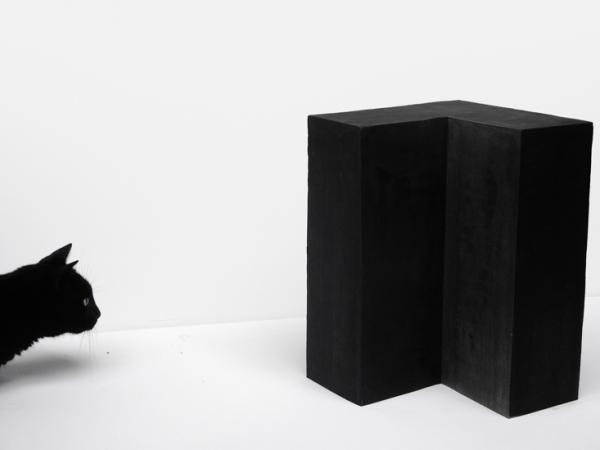New works by Peter Fischli and David Weiss are presented in London for the first time since the untimely death of David Weiss at the age of 66, last April. The solo exhibition consists of sculptures created between 2010 and 2012 and are connected to the group of works in unfired clay which the artists displayed at the 54th Venice Bienniale in 2011.
In the current exhibition, Fischli and Weiss continue their ongoing observations of the unspectacular, everyday world with objects of unfired clay and black rubber. Their oeuvre consists of sculptures, photographs, films, and videos, materials they had been working with since the early 1980s. For example, in the Rubber Sculptures (since 1986), the artists create true-to-life, rubber casts of natural objects and typical items of everyday use, while in the series Plötzlich diese Übersicht (“Suddenly This Overview,” 1981) they imaginatively reenact a revised history of humanity through several hundred sculptures of unfired clay.
In Walls, Corners, Tubes, the artists present a series of objects with geometrical bodies which have the form of walls, corners, and tubes and are made alternately of black rubber and unfired clay. Both the shapes of the objects and their titles such as Wand aus Ton (“Wall of Clay,”2012) or Röhre aus Gummi (“Tube of Rubber,” 2012) recall functional elements, such as those often found at building supplies stores. Placed on high, white pedestals, the sculptures appear in various scales which distance them from their origin in the observed forms of reality. On the one hand, their dimensions are oriented towards the human body, so that they automatically relate to it like tools or items for everyday use. On the other hand, they become sculptures which, on a reduced scale, demonstrate an affinity to the objecthood of the Minimal Art of the 1960s.
With black rubber and unfired clay, the objects are made out of two materials which, through the processes of casting and modelling, achieve a transition from formless material into clearly outlined shapes. In realizing these shapes as precisely as possible, the artists explore the physical characteristics of the materials. The interaction of the artists with the materials is brought to light along with their fascination with the difficulty of imparting an exact form to them. In addition, the sculptures focus on the visually and tactilely perceptible contrast between the two different materials: With its synthetic materiality, the black rubber imbues the objects with an opaque, light-reflecting texture which ennobles them and transfers them into the domain of fetishistic commodities of mass industry. In contrast, the raw, unfired, mineral material of clay emphasizes the processual nature of the act of shaping and evokes a delicate, changeable co nsistency. The working with clay, one of the primary gestures of artists who use their hands and a typical characteristic of amateur culture, stands in contrast to the precise execution of the technique of casting in rubber. Inasmuch as the almost identical forms are created out of the two contrasting materials, there is an evocation of the differences between culture and nature, rapid technical production and slow meticulous craftsmanship, resistance and evanescence.
The duo were highly regarded for their unique wit and elevation of quotidian subjects and have exhibited extensively on the international circuit. Fischli and Weiss collaborated on work in an exploration of the “poetics of banality” the actions and objects of everyday life. In 2006 they received one of Europe’s most coveted art awards, the Roswitha Haftmann Prize. Many pieces represent early iconic investigations that encompass the major themes humor, playfulness, and an interest in language and everyday objects that came to define Fischli and Weiss’s career.
Peter Fischli and David Weiss Walls, Corners, Tubes Sprüth Magers London 10 October – 10 November 2012
Visit Exhibition Here

